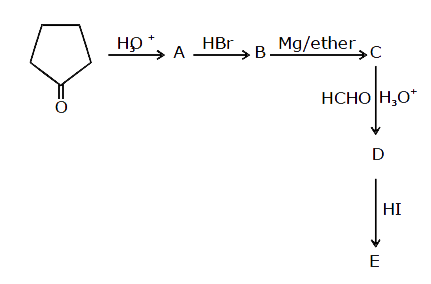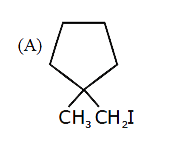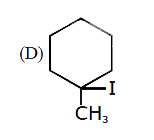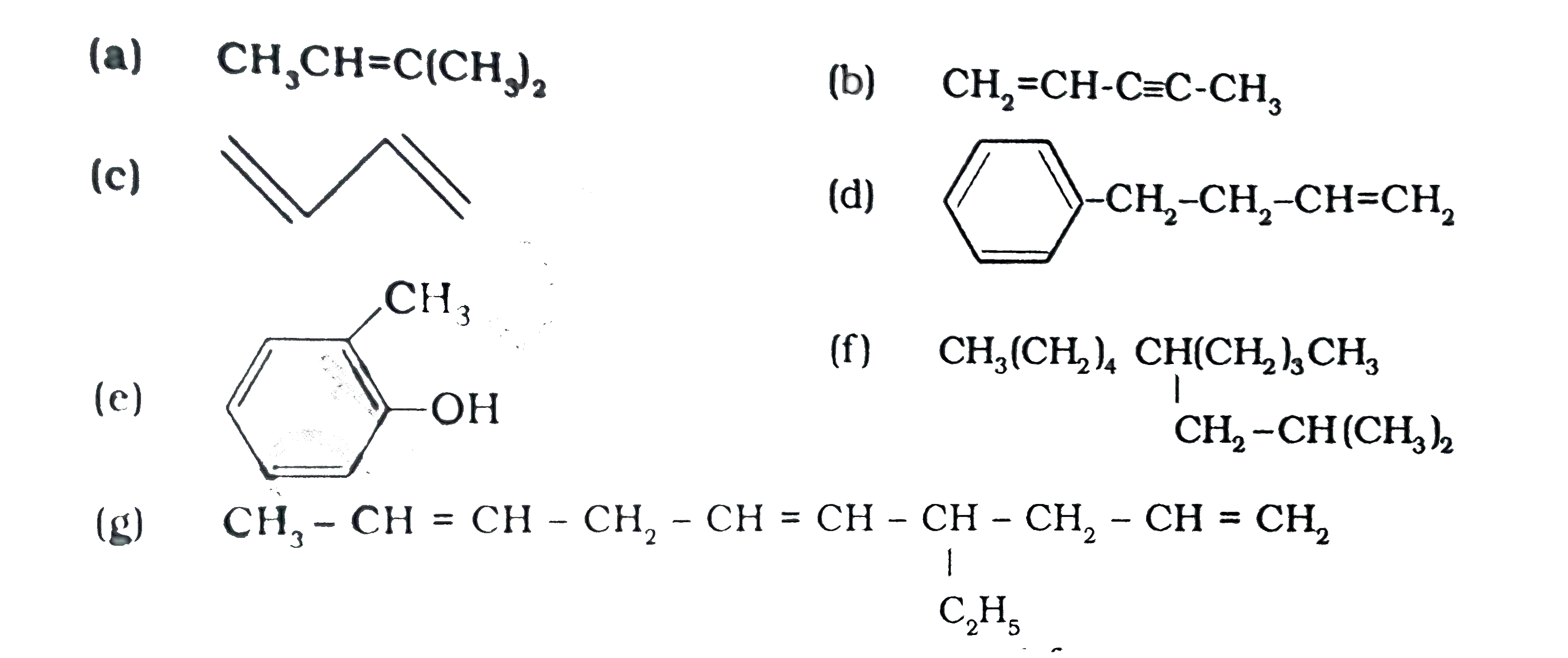CH3MrBr

E is




The correct Answer is:D
Step by step video, text & image solution for CH_3MrBr E is by Chemistry experts to help you in doubts & scoring excellent marks in Class 12 exams.
Updated on:21/07/2023Topper's Solved these Questions
- ALCOHOLS & ETHERSBOOK - MOTIONCHAPTER - ALCOHOLS & ETHERSEXERCISE - EXERCISE -2 (LEVEL -II) MULTIPLE CORRECT JEE ADVANCED
21 Videos
- ALCOHOLS & ETHERSBOOK - MOTIONCHAPTER - ALCOHOLS & ETHERSEXERCISE - EXERCISE -3 OBJECTIVE PROBLEMS JEE ADVANCED
17 Videos
- ALCOHOLS & ETHERSBOOK - MOTIONCHAPTER - ALCOHOLS & ETHERSEXERCISE - EXERCISE -1 OBJECTIVE PROBLEMS JEE MAIN
47 Videos
- ALKYI HALIDEBOOK - MOTIONCHAPTER - ALKYI HALIDEEXERCISE - Exercise - 4 | Level-II
8 Videos
Similar Questions
Only spandsp2 hybrid orbitals are involved in the formation of
(a) CH3−CH=CH2
(b) CH3−CH3
(c ) CH3−C≡CH3
(d) CH2=C=CH2
(e ) CH3−C≡C−CH3
View SolutionOutline the preparationof the following compounds using a nucliphileic subsituationr reaction.
a. CH3OC(CH3)3
b. CH3C≡CH2CH3
c. CH3CH2CH2N(CH3)2
d. C6H5CH2OCOCH3
e. CH3CH2CH2CH2NO2
f. CH3CH2CH2Cn
g. C6H5CH2N⊕≡Co−
h. CH3CH2−O−N=0
View Solution
Knowledge Check
In the following reaction sequnce: IC6H5Cl2KOH(aq)−−−−−−→(II)(i)CH3MrBr−−−−−−−−−−→(ii)H2O/H+(III)anhy.ZnCl2+conc.HCl−−−−−−−−−−−−−−→given turbidite immediately
The compounds 1 is :AC∣ClH2−C∣ClH−CH3BC∣ClH2−CH2−C∣ClH3CCH−C∣ClH−CH2−CH3DCH3−Cl∣C∣Cl−CH3CH41000∘C−−−−→A+B(g),
CH3CH2COONaSodalime−−−−−−→ΔC+Na2CO3
CΔ−−−−−→450∘CB+E,E+BNi−−→X
If E is a hydrocarbon, then X is identical withA(a)AB(b)BC(c )CD(d)DConsider the following compounds
(I) CH3−CH3∣C∣CH3−Br
(II) CH3−C∣CH3−Br
(III) CH3−CH2−CH2Br
Their reactivity toward E1 isAI gt II gt IIIBII gt I gt IIICII gt III gt IDIII gt II gt I
Give the decreasing order of acidic character.
(1) NO2CH2OH,
(b) C1CH2COOH,
(c) HCOOH,
(d) CH3COOH,
( e) CH3OH
(2) (a) RCOOH
(b) ROH
( c) H2O
(d) NH3
( e) CH≡CH
(f) RH
(3) (a) HCOOH
(b) PhOH
( c) CH3OH
(d) C2H5OH
( e)CH3C≡CH
(f) CH≡CH,
(g) NH3
(4) (a) CH3COOH
(b) H3O⊕
( c) H2O
(d) C2H5COOH
( e) NH3
(f) CH≡CH
(g) CH2=CH2
(h) CH4
(i) C2H6.
(5) (a) H2O
(b) CH3OH
( c) RC≡CH
(d) H2
( e) NH3
(f) RH
(g) ROH
(6) Basic character of conjugate base of Problem 5.
View SolutionComplete the following and point out the mechanism as SN2,SN1,E1,E2, or none.
(a) Me2C=CHC1+NaNNH2
(b) CH3CH2Br+..Pme3
(c) BrCH2CH2CH2Br+IӨ
(d) BrCH2(CH2)2CH2Br+Mg (ether)
( e) Me3CBr+HCOOH+HCOOӨ (small amount)
(f) Me3CBr+HCOOH
(g) CH3CH2CH2Br+LiA1D4.
View SolutionWrite IUPAC names of the following compounds : (a) CH3CH=C(CH3)2
(b) CH2=CH−C≡C−CH3
(c )
(d)
(e )
CH3(CH2)4CH(CH2)3CH3 ∣ CH2−CH(CH3)2
View SolutionConsider the following compounds
(I) CH3−CH3∣C∣CH3−Br
(II) CH3−C∣CH3−Br
(III) CH3−CH2−CH2Br
Their reactivity toward E1 is
View SolutionExpress in decreasing order of (+I)−
(a)CH3CH2−CH2− (b)CH3−
(c)CH3−CH3∣C∣−CH2−CH3 (d)CH3−CH3∣C∣CH3−
(e)CH3−CH−CH2∣ CH2CH3 −
Correct answer is -
View Solution
